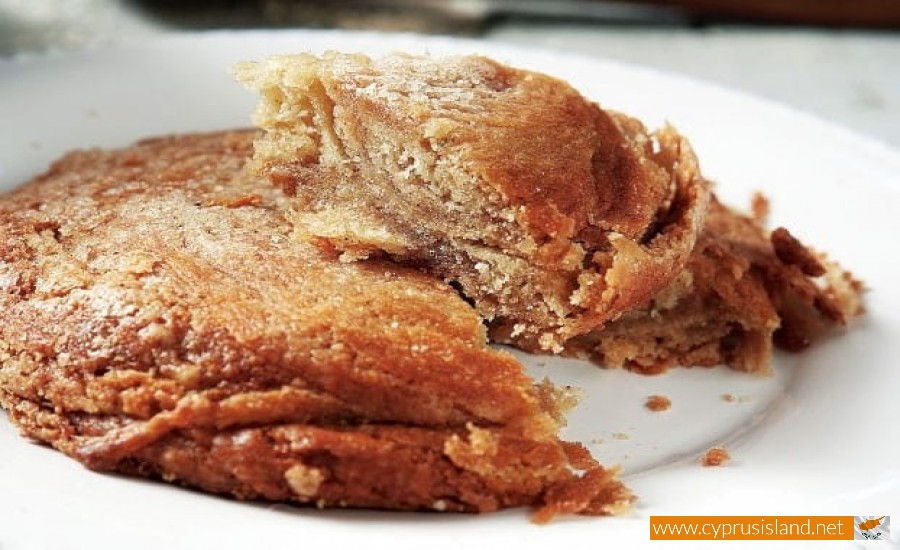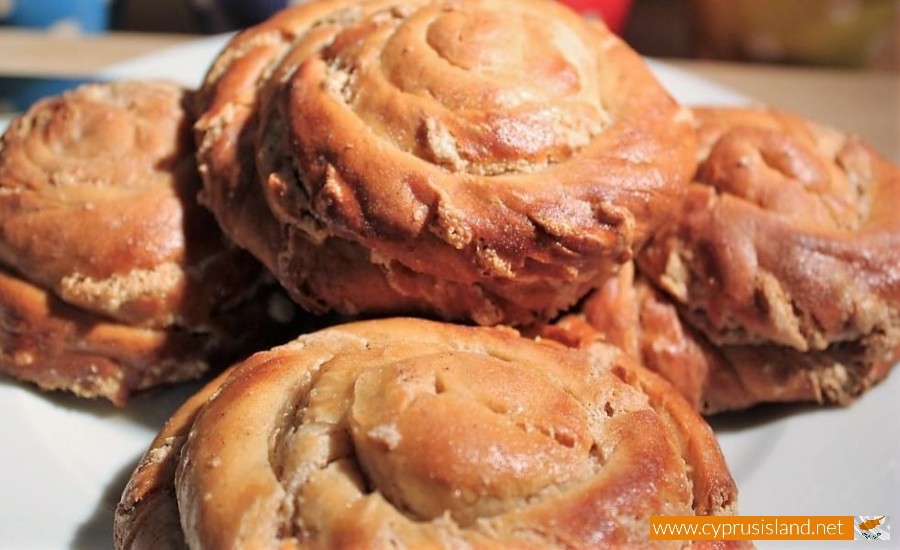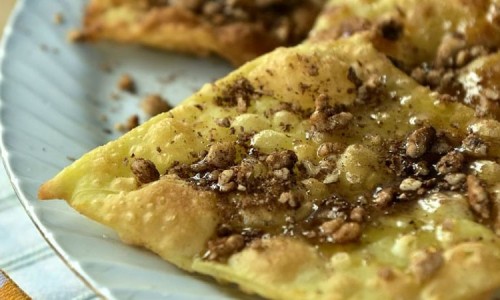Tahinopita (Tahini pie)
A warm, flaky pastry spiraled or layered with a rich, nutty sesame filling — tahini pie, known locally in Cyprus as tahinopitta (ταχινόπιττα), is more than just a dessert. It's a piece of cultural heritage, a street food staple, and a symbol of Mediterranean simplicity elevated to perfection.
Popular in both Greek and Cypriot communities, tahini pie bridges diverse culinary influences and holds a special place in the island’s identity.
Origins & Cultural Roots
Tahini pie traces its roots to Cyprus, where it has been enjoyed for generations in bakeries, homes, and street markets. While sesame has long been a staple in Middle Eastern and Mediterranean cuisines, Cyprus gave tahini a starring role in this distinctly local pastry.
The pie is traditionally enjoyed during Lent, when dairy and eggs are avoided, making it a vegan treat by nature. But its popularity extends beyond religious observance — it’s eaten year-round, especially as a quick snack with coffee or tea.
Its sister versions can be found across the Levant and parts of the Arab world — such as Lebanese ka'ak bi tahini or Palestinian sesame pastries — but Cyprus’s tahinopitta stands out for its texture and presentation.
What Goes Into It?
Despite its rich flavor, tahini pie uses a modest list of ingredients:
The Dough
- Flour
- Yeast
- Sugar
- Olive oil or vegetable oil
- Water
- A pinch of salt
The dough is soft but structured, rolled thin to allow for spirals or folds that create beautiful layers.
The Filling
- Tahini (sesame paste) – the heart of the recipe
- Sugar or honey – balances the bitterness of sesame
- Cinnamon (optional) – for a warm depth of flavor
Once spread over the rolled dough, the tahini mixture seeps into the layers, caramelizing slightly as it bakes. The result: a gooey, nutty center encased in golden pastry.
Shapes and Styles
Cypriot bakers take pride in the way they shape tahini pies. The most common forms are:
- Spirals (rolled and coiled) – resembling a snail shell
- Flat rounds (folded or layered) – similar to a flatbread
- Rectangles or twists – especially in commercial bakeries
Each shape has its charm, and all versions share the same irresistible aroma that fills the air as they come out of the oven.
More Than Food: A Cultural Experience
In Cyprus, tahini pies are sold in nearly every bakery, especially in villages and traditional neighborhoods. They're often wrapped in simple wax paper and handed over warm from the tray — no need for garnish or cutlery.
They’re a favorite during Orthodox fasting periods, when no animal products are allowed. But because of their hearty, satisfying texture, they’re enjoyed by everyone — vegan or not.
Even street vendors and small cafes often feature tahini pie alongside koulouri (sesame bread rings), cheese pies, and olive buns. It’s considered an essential part of Cypriot snack culture.
Simple yet rich, humble yet iconic — tahini pie is the taste of Cyprus in pastry form. It’s a food that links generations, bridging the sacred and the everyday, the sweet and the nutty. Whether you try it fresh from a village bakery or bake it yourself at home, it offers a satisfying connection to a culinary tradition that has endured the test of time.
How It's Made: A Traditional Method
Here's a simplified look at the process:
- Prepare the dough – mix flour, yeast, water, sugar, and oil, and knead until soft. Let it rise.
- Roll it out – thinly and evenly, like phyllo or pizza dough.
- Spread the filling – tahini mixed with sugar (sometimes cinnamon or clove).
- Shape it – roll into a log, coil into a spiral, or fold into a layered square.
- Let it rise again – briefly, to ensure fluffiness.
- Bake – until golden brown, about 20–25 minutes at moderate heat.
- Optional glaze – some versions get a sugar syrup drizzle after baking for extra shine and stickiness.
The result is a delicate balance between savory and sweet, crispy and tender, light and indulgent.
Variations and Modern Takes
Though the traditional tahini pie remains unchanged in most local bakeries, creative spins have emerged:
- With nuts – crushed walnuts or almonds mixed into the filling
- With carob syrup or orange zest – adding a fruity touch
- Mini tahini pies – bite-sized versions perfect for parties or cafés
- Whole wheat dough – for a healthier twist
Some artisan bakers now create gourmet tahini pies with layers of different spices, artisanal tahini, or even a dusting of sesame seeds on top.
Perfect Pairings
- Greek coffee or Cypriot coffee – its bitterness balances the sweetness of the pie
- Herbal tea – especially mint or mountain tea
- Strong black tea (with lemon) – a common pairing in Turkish Cypriot cafés
Whether served warm or room temperature, tahini pie makes a comforting mid-morning snack or late-night indulgence.












